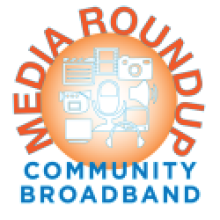
Fast, affordable Internet access for all.

Indiana
Latest telco and electric cooperative fiber broadband partnership offers a unique model by Carl Weinschenk, telecompetitor
It’s still quite common for telcos and electric cooperatives to go it alone on fiber deployments, however. Last June, the Institute for Local Self-Reliance (ILSR) released research that said 140 U.S. telecom and electric cooperatives have deployed gigabit broadband services, primarily in rural areas. The majority of these were independent projects, rather than partnerships between the two types of companies. The 2019 research showed a big increase from 2017, when ILSR identified 87 gigabit broadband deployments by telco or electric cooperatives.
Iowa
Clear Lake Internet provider making it easier to work from home by Mike Bunge, KIMT3 News
Maine
Litchfield Broadband Committee: Legislature should support community broadband, Central Maine
Minnesota
Paul Bunyan Communications expanding to Pennington, Strawberry areas of Leech Lake Indian Reservation, The Pilot Independent
Internet providers ready to handle deluge of remote workers, Minnesota’s Internet experts say by Caitlin Anderson, StarTribune
Otter Tail County selected for Blandin Community Broadband Program, Pioneer Journal
Missouri
Coronavirus fight shows need for broadband infrastructure by Dan Cassidy & Eric Bohl, The Missouri Times
North Carolina
SkyLine/SkyBest to offer free broadband service by Bill Fisher, GoBlueRidge
Ohio
‘Digital divide’ leaves some schools giving lessons on paper, some online during coronavirus closures by Patrick O’Donnell, Cleveland.com
Ohio’s three-week school closures to control the coronavirus are highlighting Ohio’s “Digital Divide,” the large difference in Internet access between different communities and neighborhoods. While affluent districts like Solon have enough students with Internet access at home for online learning, poor districts don’t and have no choice but to send lessons home the same way schools would have decades ago.
General
Congress passes DATA Act for rural broadband Internet by Jeff Postelwait, T&D World
Disconnected: Remote work and virtual learning without broadband access by Amanda Magnus & Anita Rao, BPR News
Response to New Coronavirus
Coronavirus exposes how bad America’s homework gap really is by Linda Poon, CityLab
But getting online for class will be hard for kids in Young’s Glendale neighborhood, where residents are largely immigrant, of lower income, or part of the refugee community. “We’re in a historically underserved community, and it has the lowest rate of internet-at-home in the city,” she says. Many students would typically do their homework at the library. With libraries closed, both the Wi-Fi inside and the hotspot devices they lend out are no longer available.
Internet Providers Won’t Cut Off Users Over Unpaid Bills for 60 Days by Johnny Diaz, The New York Times
116 More Broadband And Telephone Service Providers Take Chairman Pai’s Keep Americans Connected Pledge, telecompetitor
Online learning will be hard for kids whose schools close — and the digital divide will make it even harder for some of them by Jessica Calarco, The Conversation
How utility, phone and Internet companies are giving consumers a break during coronavirus pandemic by Nathan Bomey, USA TODAY
Many utilities, telecommunications companies and automakers are easing shutoffs and waiving late fees to accommodate consumers who might be struggling during the coronavirus pandemic. Companies like Comcast, PG&E, AT&T, Hyundai and Duke Energy are among the businesses giving people a break, in one way or another.
Is the Internet resilient enough to withstand coronavirus by David Belson, Internet Society
Philly Fed report exposes digital divide for minority, poor and rural communities by Jon O’ Connell, The Citizens’ Voice
The FCC should send Wi-Fi hotspots to schools to close the homework gap by Jessica Rosenworcel, The Verge
Iowa
Iowa receives $26.2 million in emergency education relief to expand broadband access, Discover Muscatine
Minnesota
Colorado
Little-known Internet network plans Western Colorado expansion to link students, nonprofits to supercomputers by Tamara Chuang, Colorado Sun
Louisiana
California
Partnerships can close the digital divide by Apoorva Pasricha & Kevin Frazier, GovTech
Colorado
Arizona
Mohave Electric Cooperative moves forward to build fiber optic network in partnership with TWN Communications, Cision PR Newswire
Arkansas
